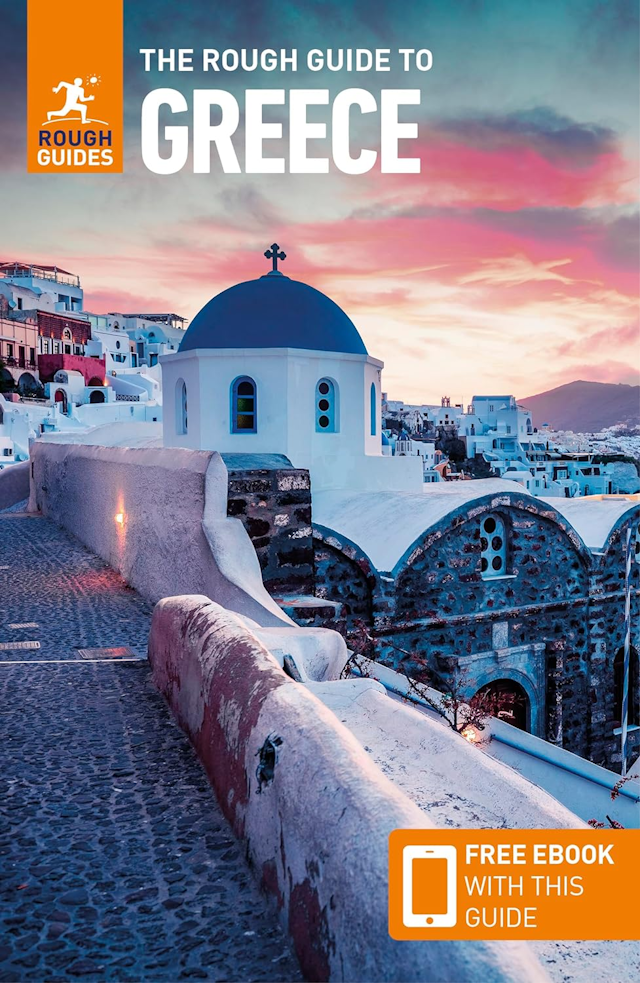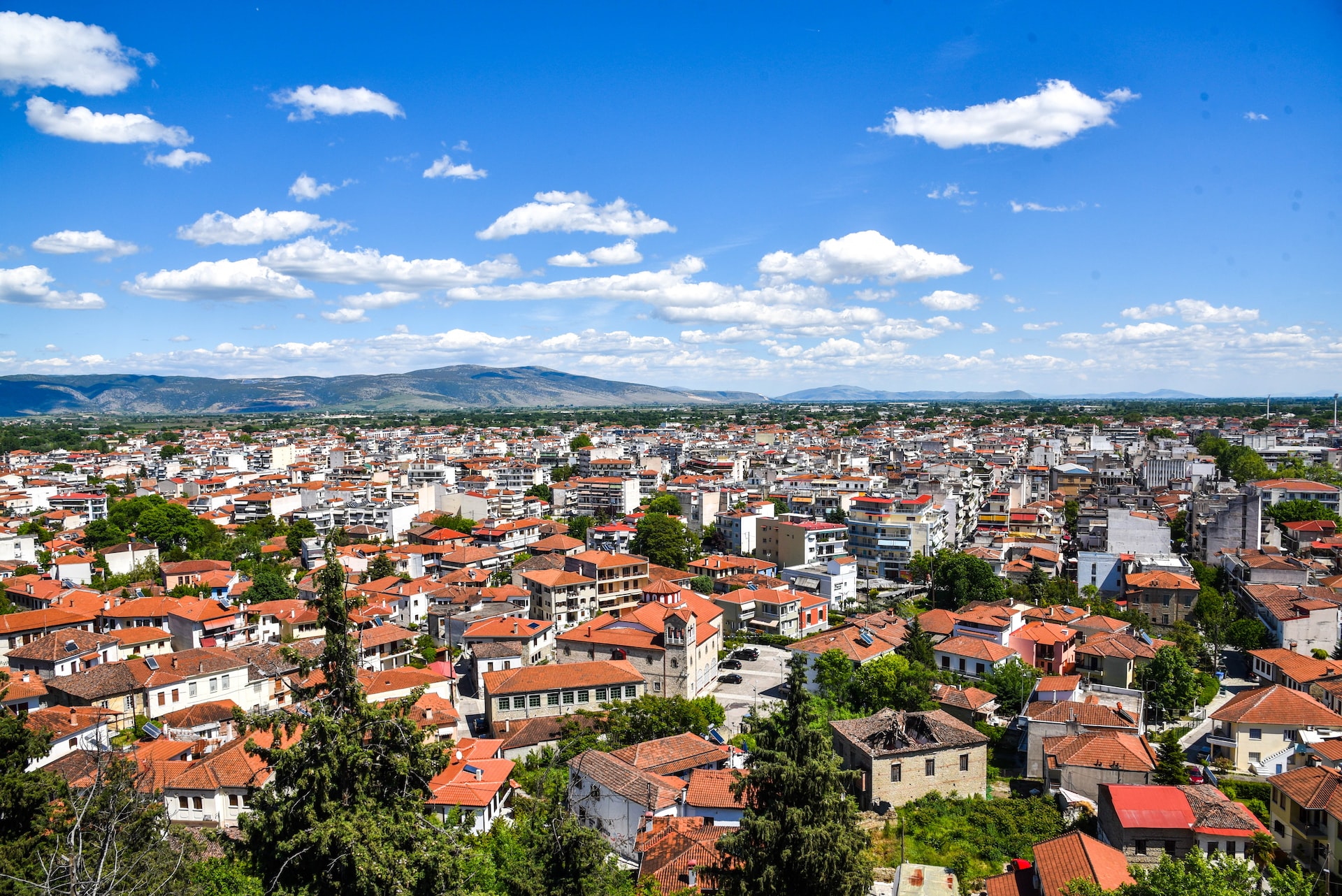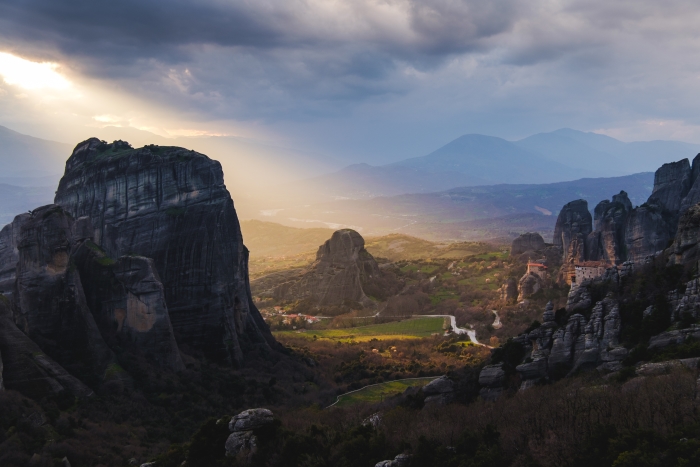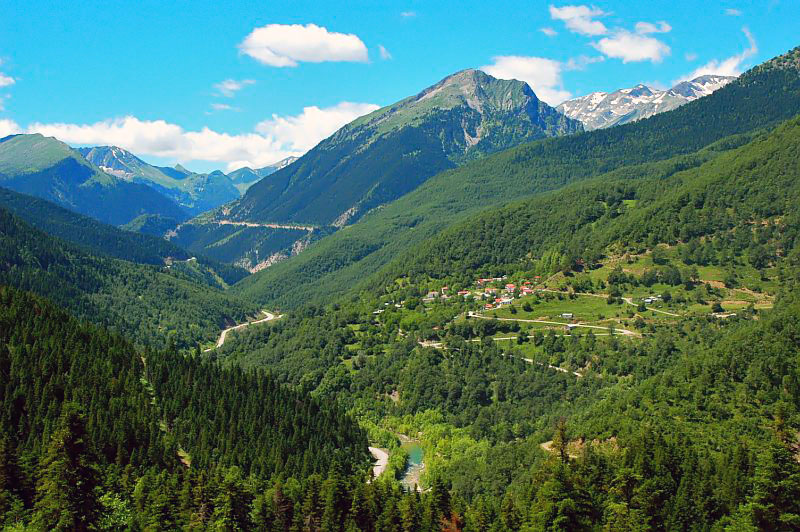- HOME
- Central Greece
- Things to See in Trikala
Things to See in Trikala
Trikala is a city in Thessaly, noted for its traditional architecture with lots of things to see and a good base for visiting the monasteries of Meteora.
The city of Trikala in Thessaly, Greece, is not on most tourists' radar, though they pass very close to it when they go to visit the stunning monasteries of Meteora, a mere half-hour's drive away. Many visitors stay in Kalambaka, to be closer to the monasteries, but you should also consider Trikala as a base. There are lots of things to see in Trikala.
Trikala is an attractive and lively place with a lot going for it. A river runs through it, which adds to the appeal of any city, and it has a lovely Old Town, with many traditional buildings. There's a Byzantine Castle with great views, an enjoyable cultural centre, and lots more to see within a short drive.
Things to See in Trikala
Ancient Trikki
You can see the foundations of the original city at this small archaeological site next to the Cathedral of St Nicholas. At the moment you have to make an appointment to visit, though to be honest, there's not a lot to see. Archaeologists have found some mosaics, a Roman bath, a Byzantine temple, and the remains of a few buildings. The site is also known as the Asclepieion after the Greek God of Medicine, Asclepius, who was believed to be from Trikala.
Byzantine Castle
Originally built in the 6th century AD, the castle was rebuilt by the Ottomans in the 17th century, and they added the first huge clock tower. Another clock tower was added in 1936, and this became the symbol of Trikala. It's worth the climb for the views over the city towards the mountains. There's also a very nice cafe at the top, besides a little park.
Central Bridge
This file is licensed under the Creative Commons Attribution-Share Alike 4.0 International license.
With the Lithaios River running through the city, Trikala naturally has several bridges but this metal bridge is one of the most attractive. It was built in 1886 and until 1996 was used by traffic but these days it is for foot traffic only. The base of the bridge has some glass sections so you can see the river beneath your feet.
Fanari Castle
Fanari Castle is a half-hour drive south of Trikala, near the village of Fanari. It's a little off-the-beaten-track and takes a bit of finding, but you'll be rewarded with excellent views over the plains of Thessaly. The 14th-century fortress is very well-preserved, with its solid walls and towers. You can visit any time as it's open access.
Matsopoulos Mill
This imposing 1884 flour mill, which was in operation until the 1980s, is also known as the Mill of the Elves. That's because each Christmas it's transformed into a colourful grotto of lights which brings children (and their parents) in from all the nearby towns and villages. The rest of the time it acts as a cultural centre, with a cinema and theatre, and has a local history museum. It's also used for events, including the city's Comedy Festival.
Old Town
To see some of the old buildings that Trikala is noted for, head to the Varousi and Manavika districts. This is now largely a conservation area with buildings going back to the 17th century, and churches even older. You'll find the Old Town if you walk north-west from the main city square for a few minutes. It's a delightful place to wander round.
Osman Shah Mosque
This file is licensed under the Creative Commons Attribution-Share Alike 4.0 International license.
This 16th century mosque is also known as the Kursum Mosque from its Turkish name, meaning 'Leaden Mosque'. At one time there were several mosques in Trikala but this is the only one to remain. You'll find it on Karditsis Street, next to the Orthodox church. On the other side of the church are the remains of twin Ottoman baths, also dating from the 16th century.
Pyli
The village of Pyli is a 20-minute drive south-west of Trikala and is famous for its ancient and graceful stone bridge, which was built in 1514 and arches over the Portaikos River. With waterfalls on either side of the bridge, it is a spectacular sight.
It's a couple of kilometers west of the village of Pyli in the village of Kato Paleokarya and, remarkably, until 1936 the Paleokarya Bridge was the only connection between Thessaly and Epirus.
If you visit Pyli then don't miss the 13th-century church of Porta-Panagia in the neighbouring village of Porta. It's about a 20-minute walk from the centre of Pyli, on the far side of the river.
Tsitsani Museum
This is a museum for lovers of Greek music as it celebrates the work of musician and composer Vassilis Tsitsanis. It's obviously a specialist collection but also of interest is the building it's housed in at Karditsis 1, as this is still known as the old prison, though it was also used as a bath house after the prison closed. mouseiotsitsani.gr
When to Visit Trikala
You can visit Trikala all year round, though spring and autumn are ideal times. From about June to August temperatures can get very hot, up into the 30s (90s F). Winters can see temperatures dropping below freezing at night, and there is occasional snowfall, but it's not common. Even in summer you can get the odd rainy day, but most months there are just a few rainy days. Our tip is to visit in April/May or September/October, if you have a choice.
Visiting Meteora from
Trikala
Visiting Meteora from Trikala is easy. Take the E92 road that leaves the city heading north-west towards Kalambaka, the nearest town to Meteora. As you approach Kalambaka, look for a right turn and a blue sign marked Meteora (Μετέωρα in Greek). It's only a 30-minute drive from Trikala.
Theopetra Cave
On the way to Meteora from Trikala you will pass a turning on the right to Theopetra. If you have time it's worth making the diversion to visit the Theopetra Cave, and there's also a museum in the village of Theopetra. You can park here and walk to visit the cave. Carbon dating has shown that people lived in the cave about 50,000 years ago.
History of Trikala
As mentioned, the area around Trikala is known to have been inhabited for around 50,000 years. The city of Trikala itself was founded in about 3,000 BC, although there was already a settlement on the site. You can find out more in the history museum in the Matsopoulos Mill.
In 1393/4 AD Trikala became part of the Ottoman Empire, when Thessaly was invaded by the Turks. It stayed that way until 1881 when Thessaly became part of Greece once again
Latest Posts
-
The Lesser-Known Traditions of Greek Easter
Step off the beaten path this spring and discover the enchanting — and often surprising — Easter traditions found across Greece. -
Easter in the Mystical Castle of Monemvasia
In the castle town of Monemvasia, with its dramatic medieval backdrop and sea views, Easter is a deeply spiritual and atmospheric experience. -
Sifnos: Greece’s Hidden Culinary Star on the Rise
Sifnos, a Cycladic island, is gaining fame for its rich culinary heritage, especially the beloved melopita honey-cheese tart. -
Easter in Leonidio: A Tapestry of Light, Culture and Cliffs
In Leonidio, Easter comes alive with handmade hot air balloons in the sky and lanterns made from bitter oranges in the streets. -
April 9 Strike in Greece to Impact Public Transport, Ferries and Air Travel
Transportation and travel across Greece will face disruptions on Wednesday, April 9, as public transport, ferry and aviation workers join a nationwide strike called by Greek labor unions. -
Ancient Theater of Lefkada Brought Fully to Light Following Systematic Excavation
The Greek Culture Ministry has announced that the first ancient theater ever identified in the Ionian Islands has recently been brought fully to light on Lefkada, revealing an impressive monument that… -
Seven Greek Traditions Recognized as Intangible Cultural Heritage
From traditional barrel-making to age-old folk dances, seven new entries on Greece’s National Inventory preserve the country’s living heritage for future generations. -
Greek Air Traffic Controllers to Hold 24-hour Strike, Disrupting Flights on April 9
The Hellenic Air Traffic Controllers Union have announced a 24-hour strike for Wednesday, April 9, in response to the protest called by the Civil Servants’ Confederation (ADEDY). The strike is being h… -
Ten Best Budget Hotels on Santorini
Greece Travel Secrets picks the ten best budget hotels on Santorini, some with caldera views, some near beaches and some close to the heart of Fira. -
No Ferries in Greece on April 9 as Seamen Join Nationwide Strike
The Pan-Hellenic Seamen’s Federation (PNO) has announced its participation in the 24-hour strike called by the General Confederation of Greek Labor (GSEE) on Wednesday, April 9. The strike, which will…

























